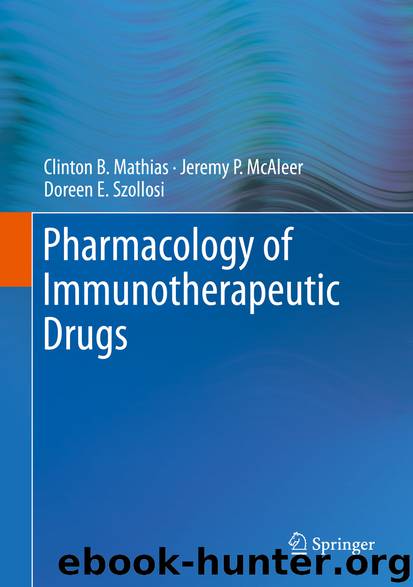Pharmacology of Immunotherapeutic Drugs by Unknown

Author:Unknown
Language: eng
Format: epub
ISBN: 9783030199227
Publisher: Springer International Publishing
Celiac Disease Treatment
The most widely prescribed and effective treatment for celiac disease is the adoption of a gluten-free diet. Typically, clinical improvement is observed within weeks, and physiological improvement of intestinal tissues occurs within 1–2 years (Fig. 6.10). Early diagnosis and treatment in pediatric celiac disease is especially beneficial, preventing the induction of many secondary conditions. Pharmacologic treatment options, especially in patients with refractory celiac disease, are limited and include immunosuppressants such as corticosteroids, azathioprine, and cyclosporine. Since the benefits derived from these are transient, a number of other pharmacologic agents are currently being evaluated. These investigational treatments include gluten degrading enzymes and the zonulin inhibitory octapeptide larazotide. Zonulin is a protein involved in the degradation of epithelial tight junctions. Inhibiting its function with larazotide has been found to be particularly promising, decreasing symptom scores and autoantibody levels during clinical trials. Other immunotherapeutic options being evaluated include the use of anti-IL-15 antibodies to induce apoptosis of IELs and tolerogenic vaccines containing gluten peptides.
Fig. 6.10Normalization of biopsy-proven changes in celiac disease after implementation of a gluten-free diet. (a) Biopsy-proven changes of untreated celiac disease. The villi are “flattened” and rudimentary, while the crypts are expanded and hyperplastic with increased numbers of epithelial cells and an increased mitotic index. The cellularity of the lamina propria is enhanced, and there is an increased number of plasma cells and lymphocytes. (b) Following implementation of a gluten-free diet, the villi are elongated, crypts are shortened, and the cellularity of the lamina propria is much reduced. Credit: Adapted from Hugh J. Freeman. Adult Celiac Disease and Its Malignant Complications. Gut and Liver, Vol. 3, No. 4, December 2009, pp. 237–246. CCLI attribution
Download
This site does not store any files on its server. We only index and link to content provided by other sites. Please contact the content providers to delete copyright contents if any and email us, we'll remove relevant links or contents immediately.
| Administration & Medicine Economics | Allied Health Professions |
| Basic Sciences | Dentistry |
| History | Medical Informatics |
| Medicine | Nursing |
| Pharmacology | Psychology |
| Research | Veterinary Medicine |
Tuesdays with Morrie by Mitch Albom(4690)
Yoga Anatomy by Kaminoff Leslie(4305)
Science and Development of Muscle Hypertrophy by Brad Schoenfeld(4088)
Bodyweight Strength Training: 12 Weeks to Build Muscle and Burn Fat by Jay Cardiello(3913)
Introduction to Kinesiology by Shirl J. Hoffman(3725)
How Music Works by David Byrne(3187)
Sapiens and Homo Deus by Yuval Noah Harari(2987)
The Plant Paradox by Dr. Steven R. Gundry M.D(2547)
Churchill by Paul Johnson(2506)
Insomniac City by Bill Hayes(2496)
Coroner's Journal by Louis Cataldie(2432)
Hashimoto's Protocol by Izabella Wentz PharmD(2331)
The Chimp Paradox by Peters Dr Steve(2297)
The Universe Inside You by Brian Clegg(2097)
Don't Look Behind You by Lois Duncan(2079)
The Immune System Recovery Plan by Susan Blum(2027)
The Hot Zone by Richard Preston(1983)
Endure by Alex Hutchinson(1964)
Woman: An Intimate Geography by Natalie Angier(1882)
